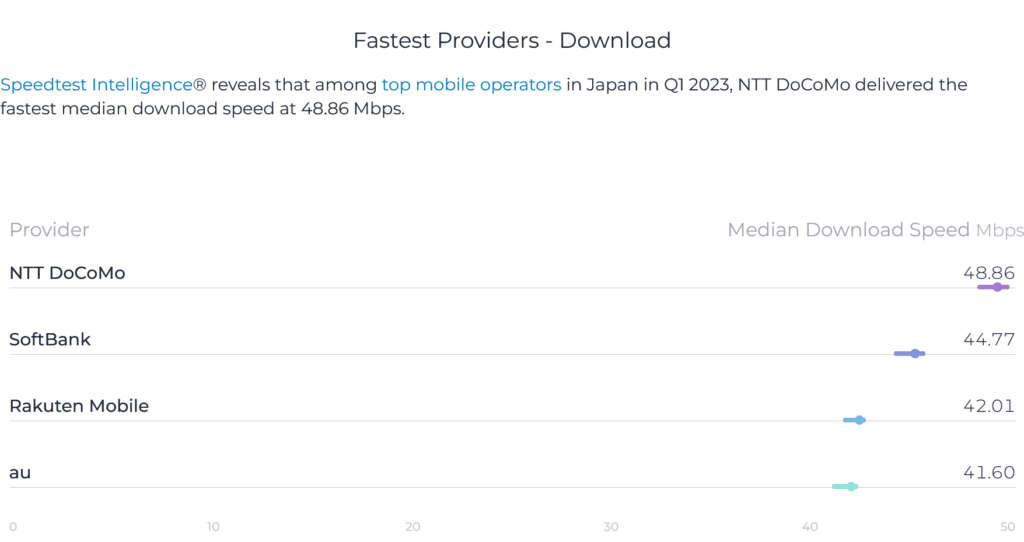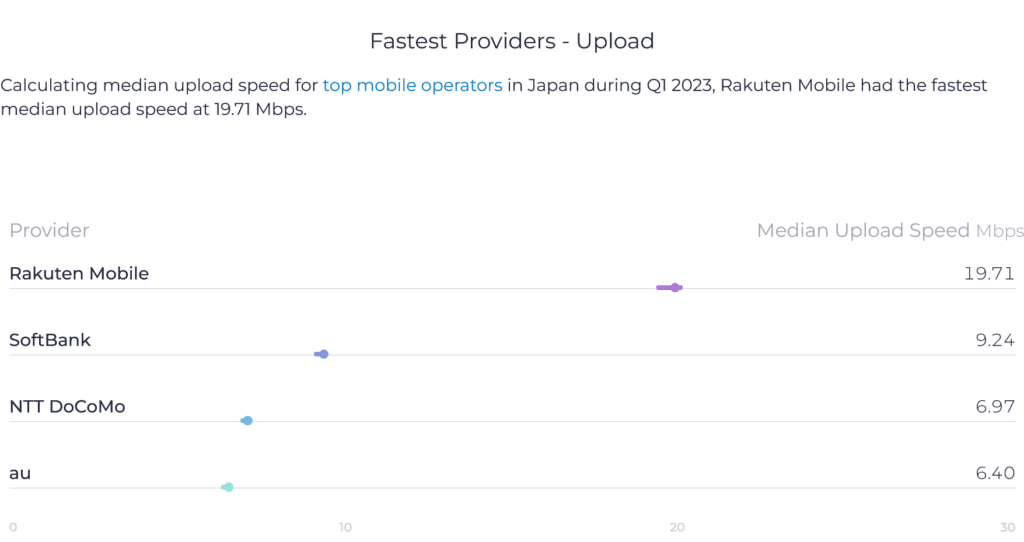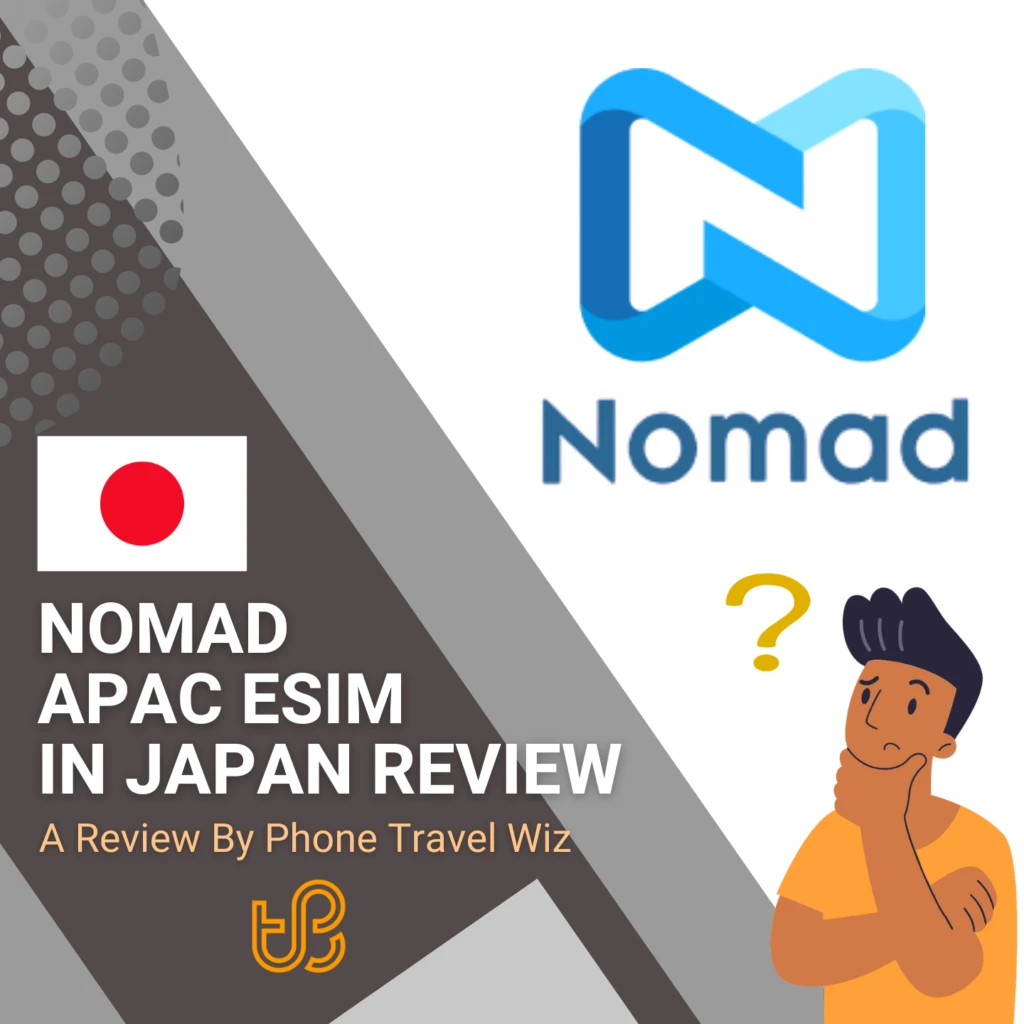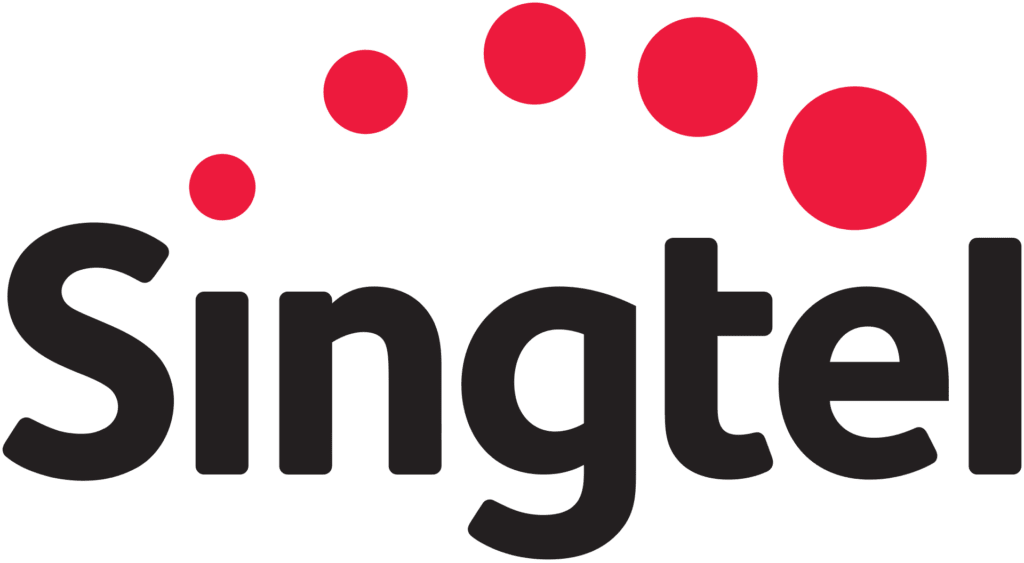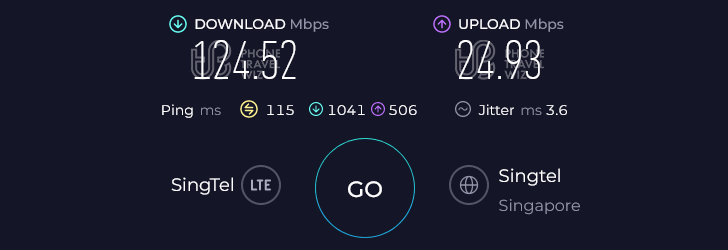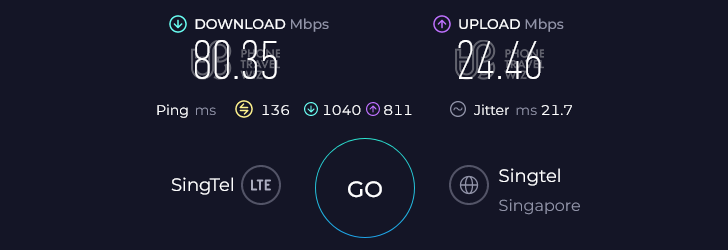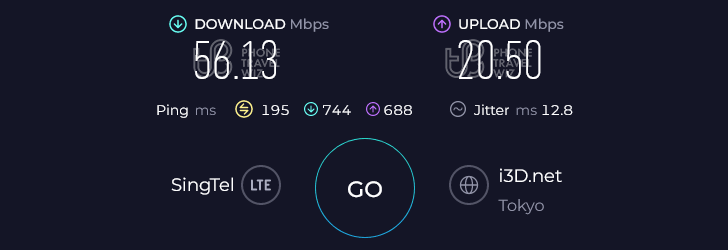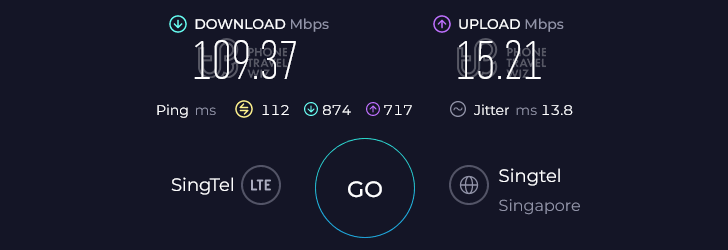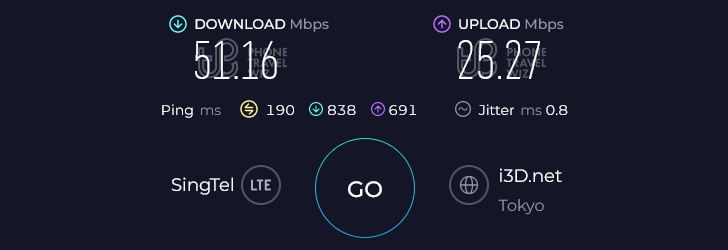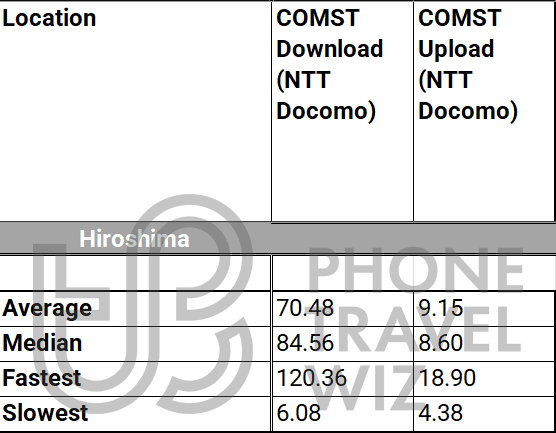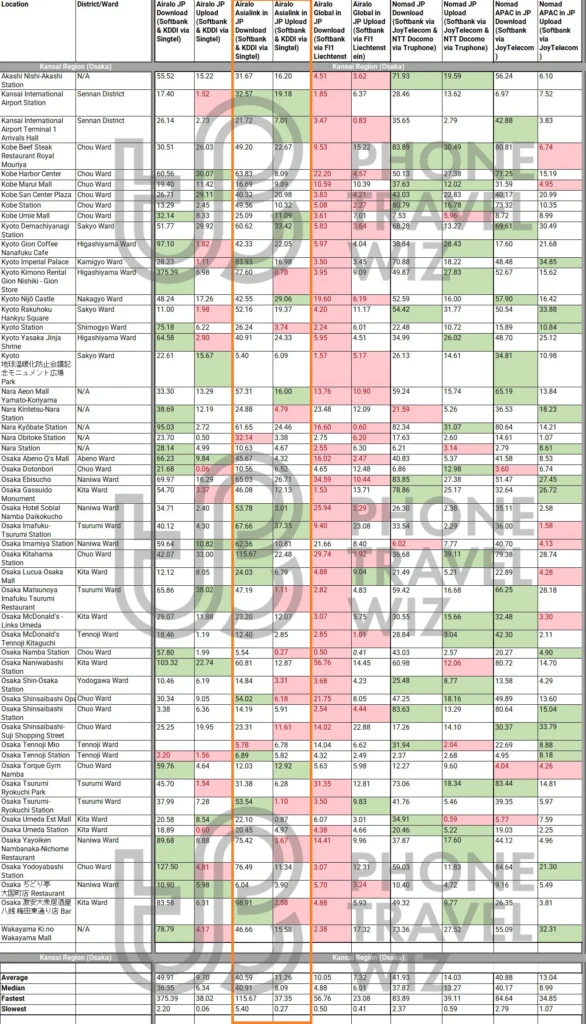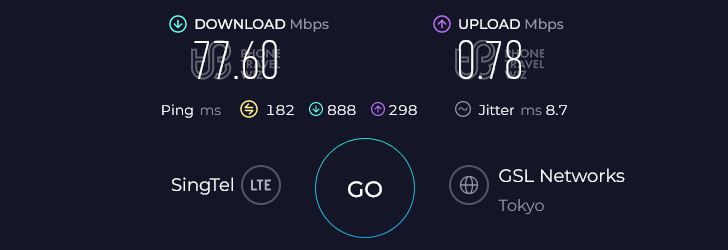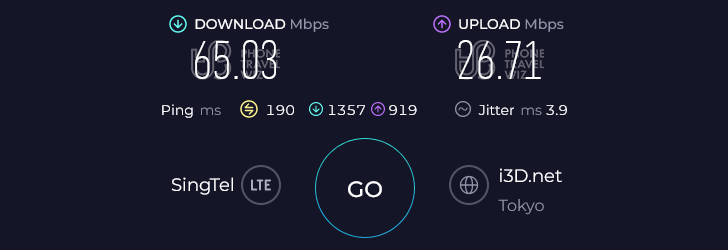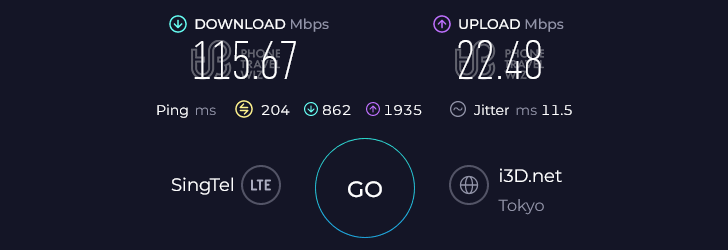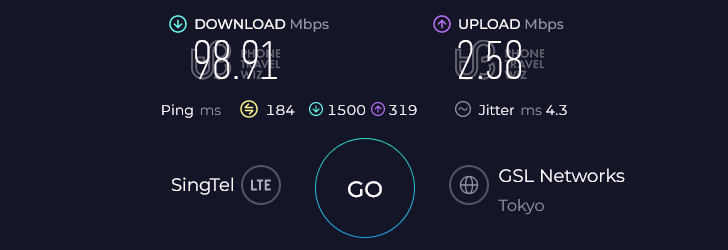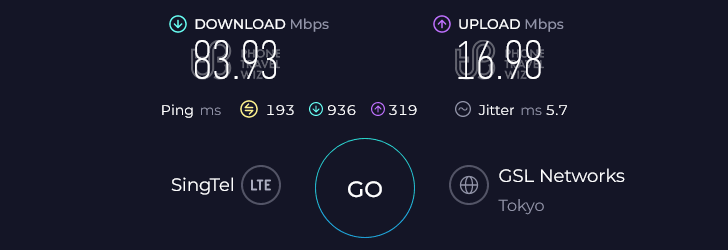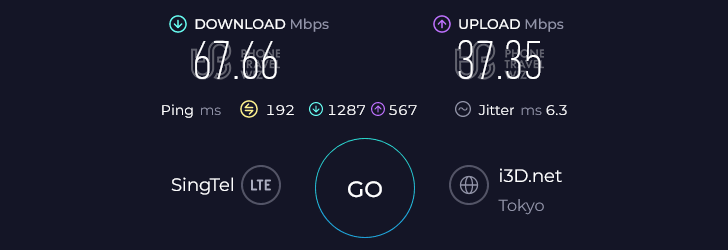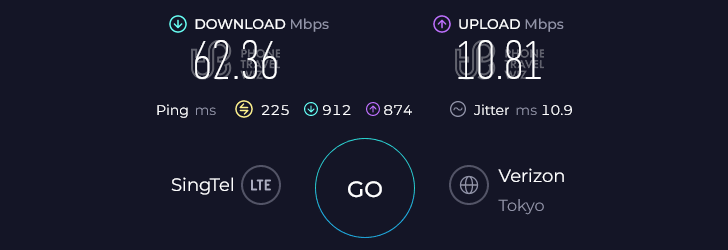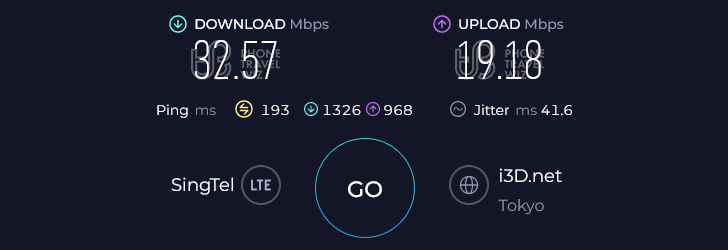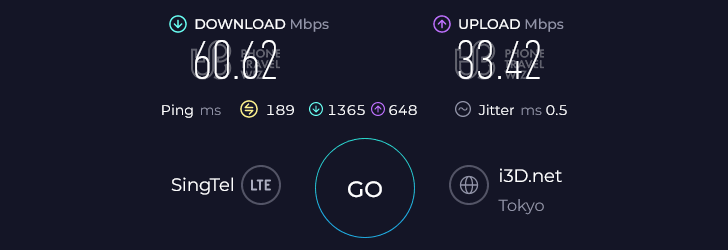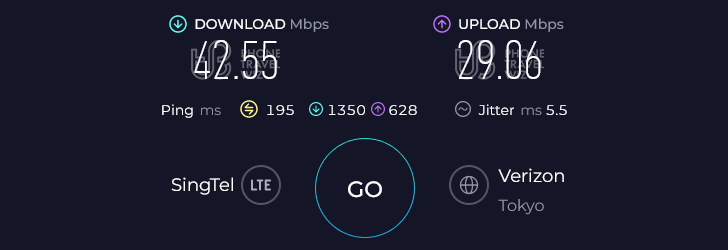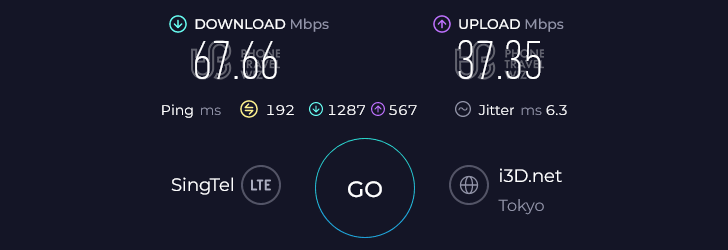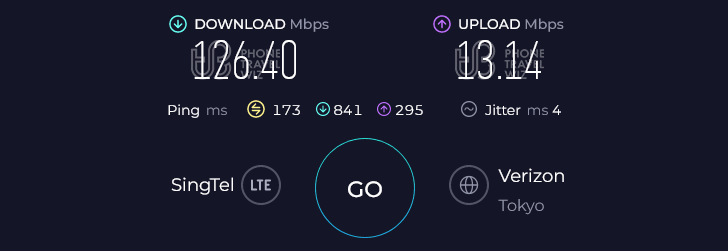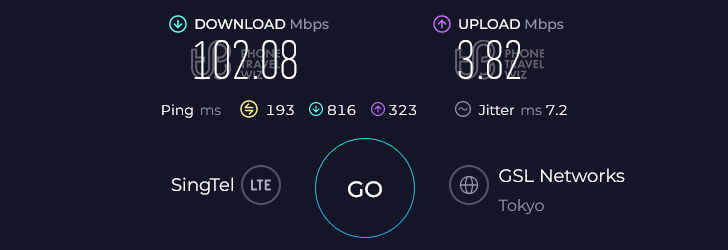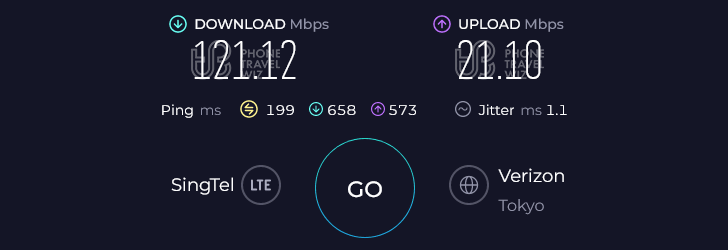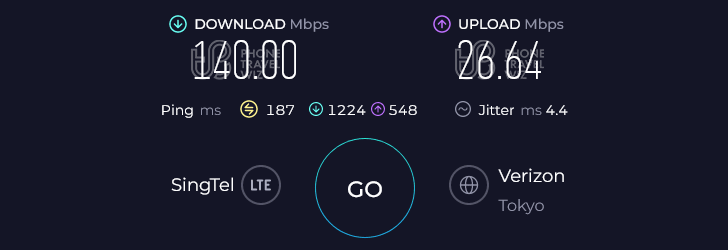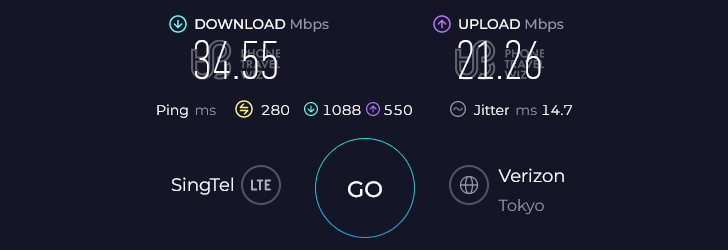The first time I visited Japan was in 2018 when I went together with a friend of mine – Ditmar.

It was a hectic summer, as I also visited China a few weeks before and the Netherlands three times (before, between & after those trips – I was living in Denmark back then).
What surprised me is that the Japanese government banned the sale of voice-enabled SIM cards to travelers in 2006 for some reason.
As a result, only data-only SIM cards are sold to visitors like you and me.
Because VoIP (Voice over IP) apps like WhatsApp were already popular back then, it did not bother us that we could not make phone calls.
Since then, a lot has changed – travel eSIMs exist, and they are incredibly popular.
And I love trying them out to see which performs the best in individual countries like Japan.
So I revisited in 2023 and stayed in the Kansai Region (mostly Osaka) and Tokyo (again).

This resulted in me spending more than 480 USD for my Japan SIM card and travel eSIM review series (50 030 JPY (≈ 360 USD) on Japanese SIM cards and 121.50 USD on travel eSIMs to be used in Japan) – yeah… I went all out for you 😎.
I am excluding the cost of Airalo's Asialink 100 GB eSIM (185 USD) and its Discover Global 20 GB eSIM (89 USD) because I use both in multiple countries, not just Japan.
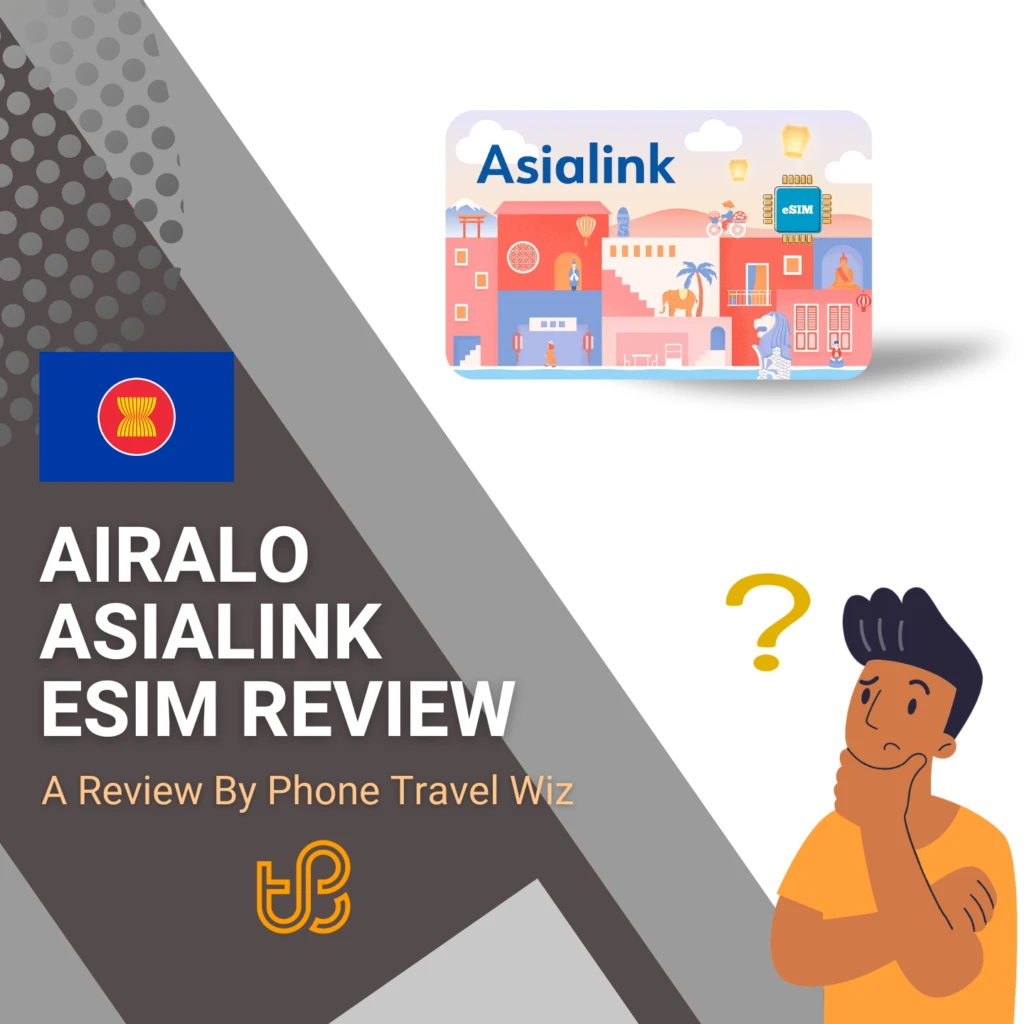
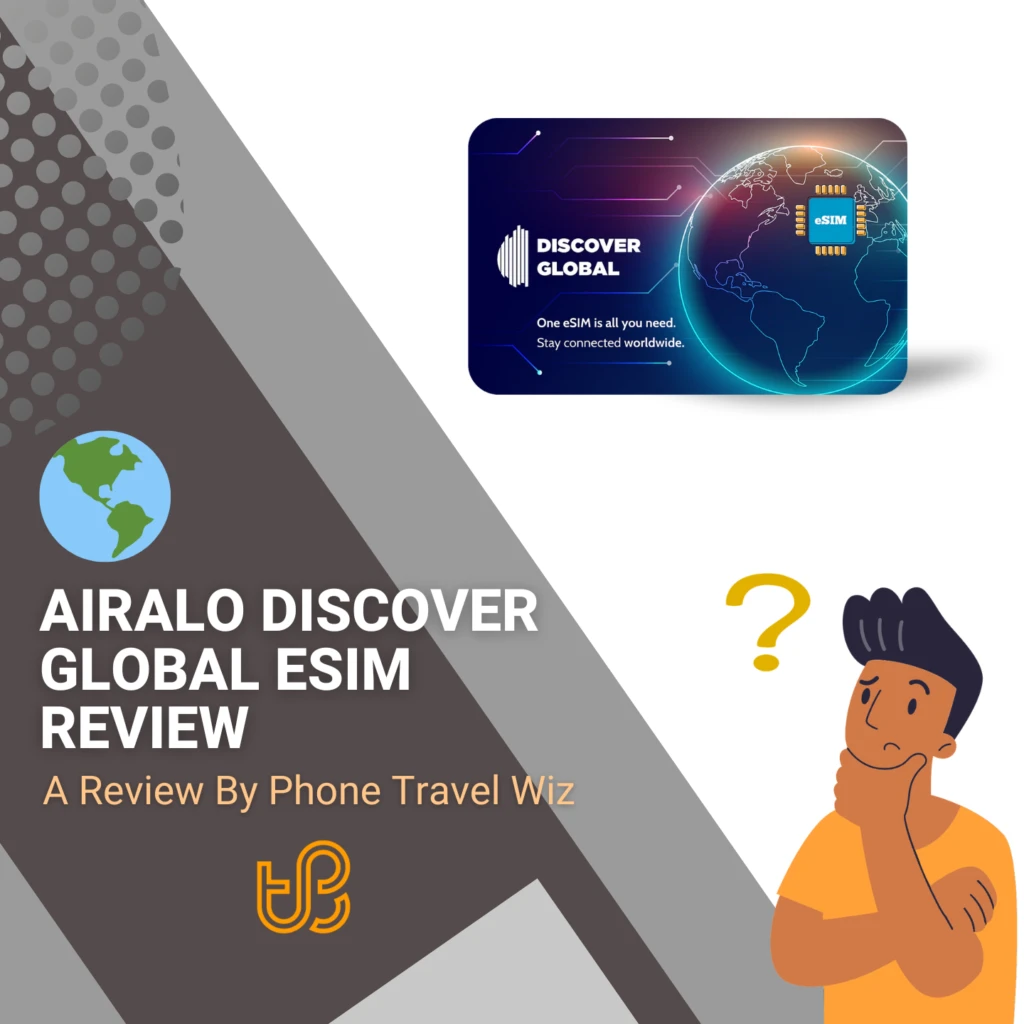
In many countries, getting a local SIM card will be the most cost-effective way to stay connected.
But that is not the case in Japan – they are criminally expensive.
Worse, almost all the Japanese SIM cards I tested had speed caps of 2 Mbps, 10 Mbps, or “unrestricted” speed for the first few days (often up to three days) before speeds would drop.
And I am talking about SIM cards that supposedly have no Fair Use Policy (FUP), and promise speeds up to 788 Mbps, or whose FUP I had not hit.
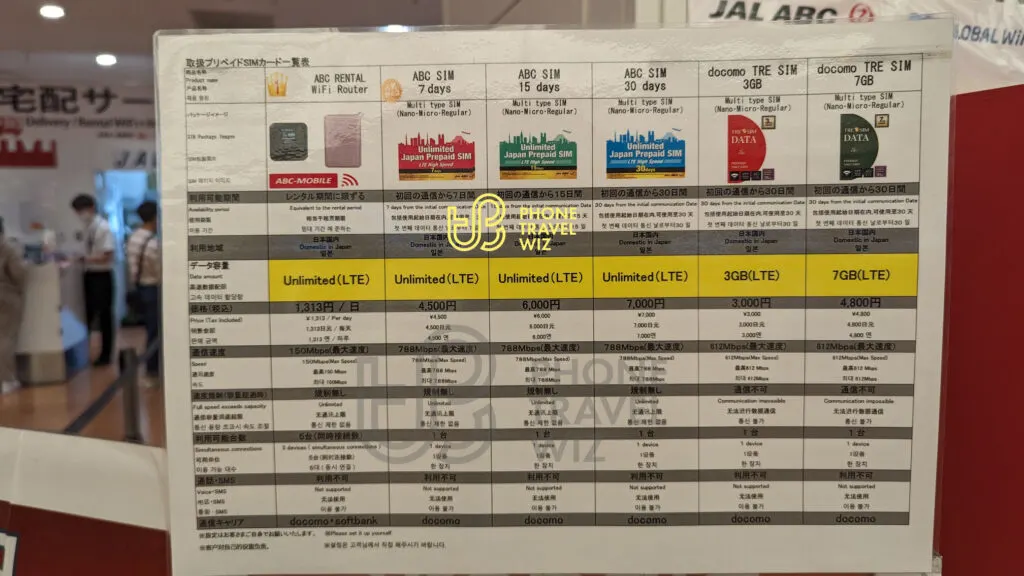
As a result, there is only one Japanese SIM card I recommend – but that one is expensive too.
Travel eSIM providers like Airalo are way cheaper than Japanese SIM cards.

Surprisingly, they performed significantly better – even when roaming on the local networks.
This phenomenon is uncommon but happens in countries where mobile operators throttle (prepaid) speeds.
Because the Airalo Asialink eSIM is basically cheaper than any Japanese SIM card available while having a significantly better performance than them, I can already recommend it if your phone supports eSIM.
Throughout this review, you will discover why I think this way, so let's start immediately!
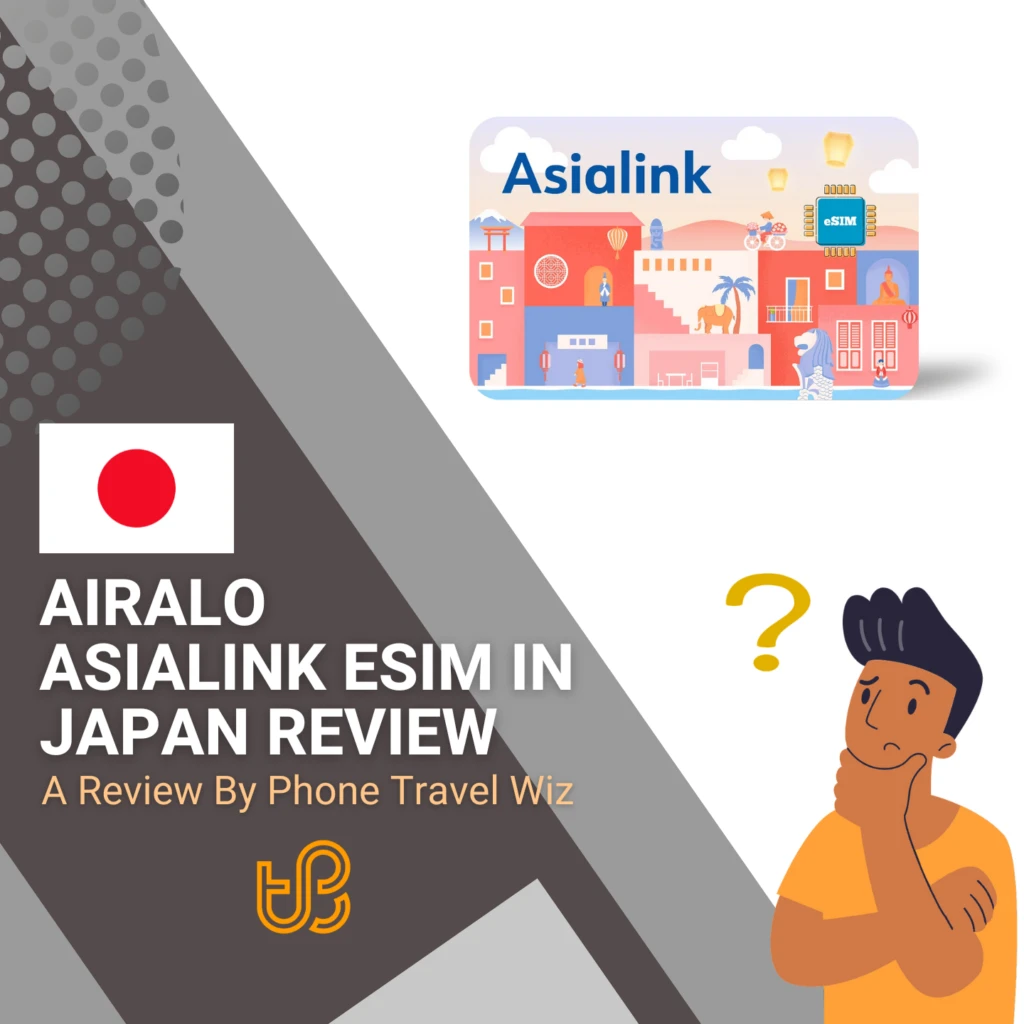
Original publication: 29th of May 2023. Last updated: 15th of January 2024.
Table of Contents
Which Phones are Compatible with Airalo eSIMs?
Before discussing the Airalo Asialink eSIM to be used in Japan specifically, you need to know whether your phone can even support Airalo's eSIMs.
Sure, your phone may support eSIM, but the local mobile operator and travel eSIM provider, like Airalo, must first certify a phone before the users can use their products.
As of May 2023, the phones shown in the infographic below are compatible with Airalo eSIMs:
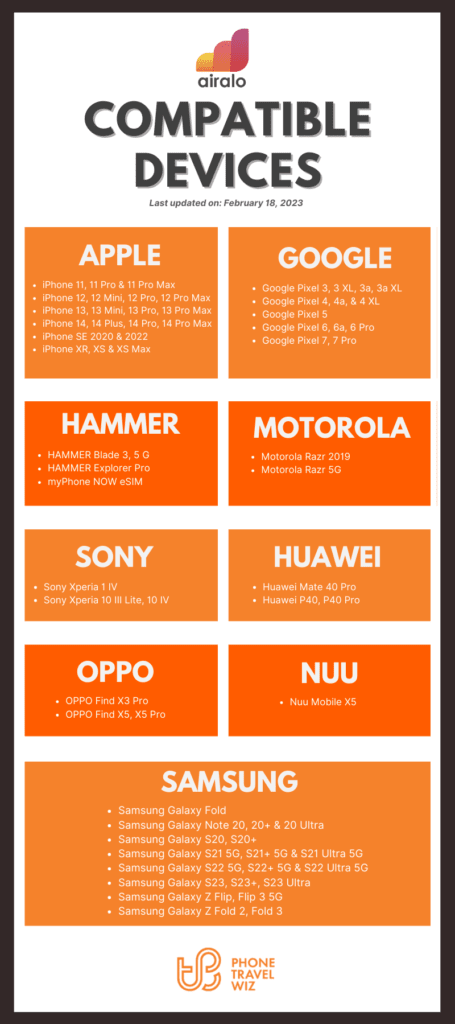
>>> Get your Airalo Asialink eSIM now! <<<
With that out of the way, let's talk more about the Airalo Asialink eSIM!
How Much Does the Airalo Asialink eSIM Cost?
You can get the Airalo Asialink eSIM for as little as 5 USD for 1 GB of data (7 days) and up to 185 USD for 100 GB (180 days). The eSIM can be used in 14 Asian countries 1 with six options: 1 GB/7 days, 3 GB/30 days, 5 GB/30 days, 10 GB/30 days, 50 GB/90 days & 100 GB/180 days.
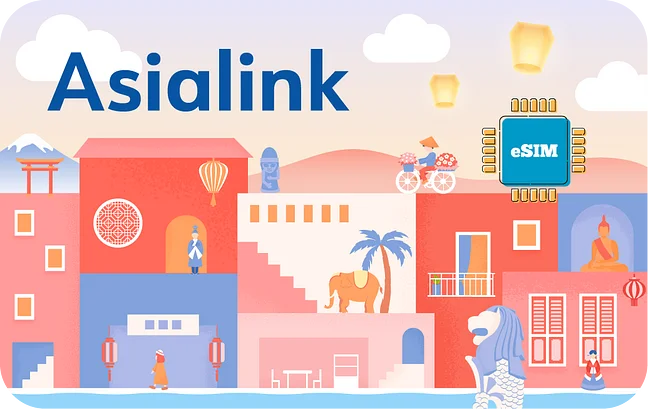
Below is an overview of how much each Airalo Asialink eSIM costs:
- Asia/Asialink 1 GB eSIM for 7 days, costing 5 USD
- Asia/Asialink 3 GB eSIM for 30 days, costing 13 USD – very popular with Phone Travel Wiz readers
- Asia/Asialink 5 GB eSIM for 30 days, costing 20 USD – most popular with Phone Travel Wiz readers
- Asia/Asialink 10 GB eSIM for 30 days, costing 37 USD – very popular with Phone Travel Wiz readers
- Asia/Asialink 50 GB eSIM for 90 days, costing 100 USD
- Asia/Asialink 100 GB eSIM for 180 days, costing 185 USD (this is the one I used during this trip in Japan and various other East- and Southeast Asian countries)
Note: Phone Travel Wiz reader popularity ranking was updated in September based on data up to the 7th of September (2023 data only).
>>> Get your Airalo Asialink eSIM now! <<<

Regardless of the currency used in your country, Airalo will always charge you in USD (US Dollar).
If your credit/debit card charges you foreign exchange fees, get yourself a Wise Borderless Account and Debit Card.
Their fees are MUCH lower than banks and credit card companies charge you (and Wise is transparent about their fees, unlike banks).
I have saved literal THOUSANDS of Australian Dollars and Euros, my main currencies, when using Wise abroad when traveling compared to my debit and credit cards.
Moreover, regardless of which Airalo Asialink eSIM you choose, you can always top it up for the same amount of data and prices as listed above.
For example, suppose you buy the 5 GB Airalo Asialink eSIM (30 days costing 20 USD) but realize you need more data.
You can top it up with the 3 GB top-up (30 days costing 13 USD) or the 100 GB top-up (180 days costing 185 USD).
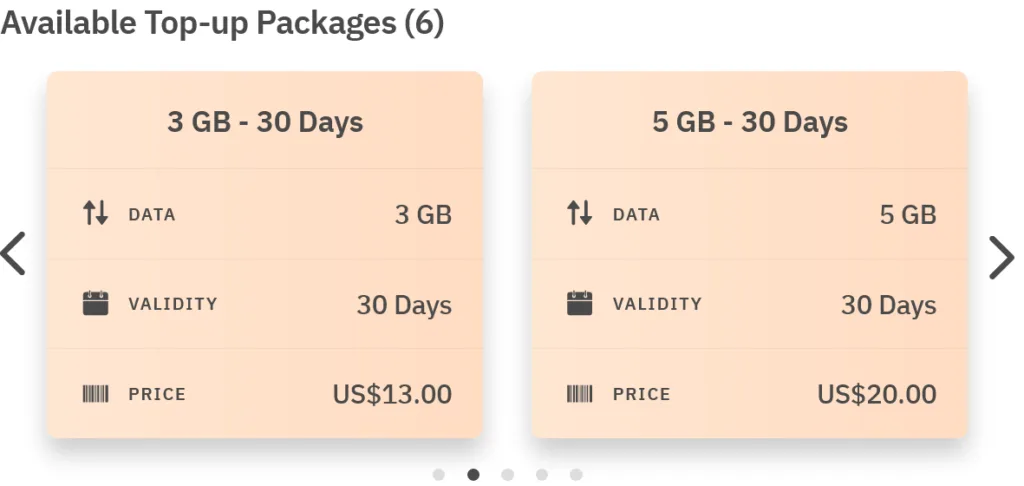
Many eSIM providers out there do not allow you to top up or extend the validity of your eSIM, so it is cool that Airalo allows you to do so.
>>> Get your Airalo Asialink eSIM now! <<<
In Which Countries Can the Airalo Asialink eSIM Be Used?
The Airalo Asialink eSIM can be used in 14 countries in Asia, mostly in East- and Southeast Asia, which are Cambodia, China, Hong Kong, Indonesia, Japan, Laos, Macau, Malaysia, the Philippines, Singapore, South Korea, Taiwan, Thailand & Vietnam.
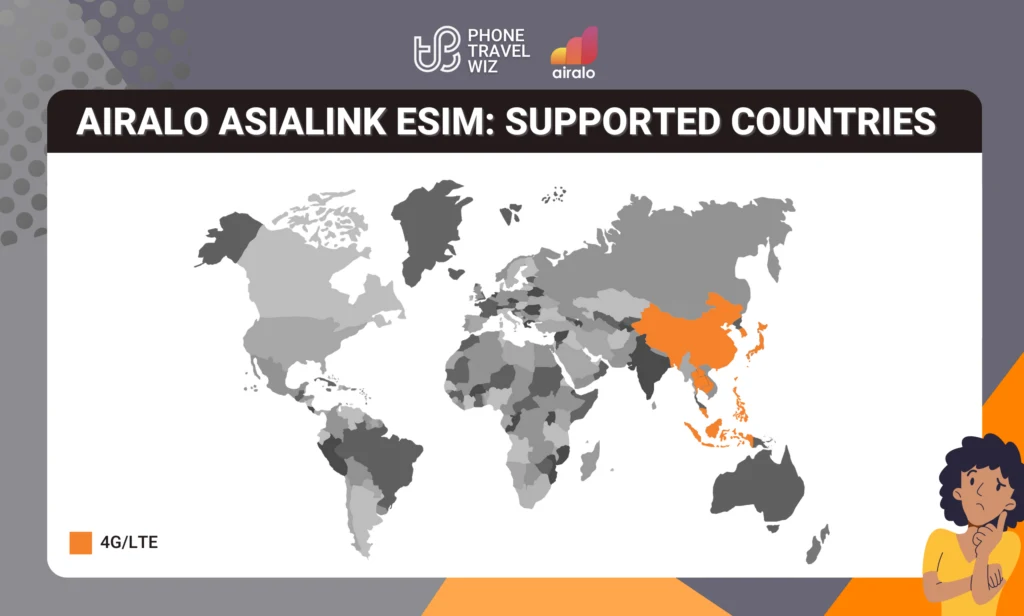
With the Airalo Asialink eSIM, you can save a lot of money by skipping the initial SIM card costs per country you visit.
So if you plan on visiting multiple East- and Southeast Asian countries, getting the Airalo Asialink eSIM will be convenient AND will save you a lot of money too.
Unlike the European counterpart, Eurolink (which I used in 11 countries, by the way), you cannot use 5G NR with the Airalo Asialink eSIM… yet 😏.
>>> Get your Airalo Asialink eSIM now! <<<
My Airalo Asialink eSIM in Japan Experience
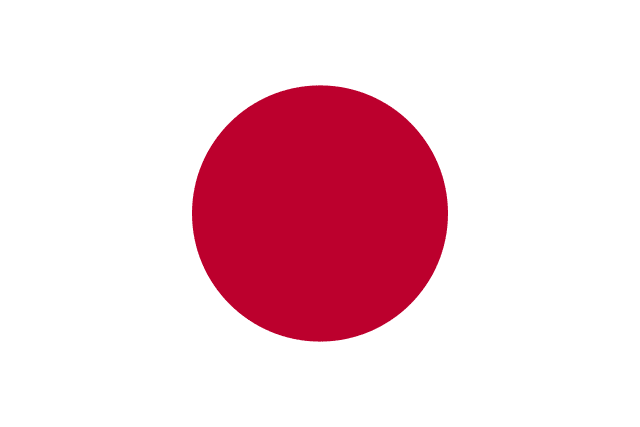
I used my Airalo Asialink eSIM in Hiroshima, the Kansai region (mostly Osaka, but also Kobe, Kyoto & Nara) & Tokyo Metropolis (mostly Chiyoba City, but also Shinjuku City, Taito City & Yokohama City).

Before we continue, I do want to let you know how travel eSIM providers like Airalo work.
It is impossible for Airalo, or any other mobile operator, to operate in every country (and do not trust any company saying otherwise), so they set up roaming agreements.
And do not get worried by the word roaming yet – roaming can be expensive, but roaming with Airalo or many other travel eSIM providers, will not result in a 5000 USD roaming bill.
What Airalo does, and basically all (actual) mobile operators do, is partner up with a local mobile operator so that their customers can still stay connected when abroad.
In the case of Japan, the Airalo Asialink eSIM uses the SoftBank and AU by KDDI networks with the help of Singtel from Singapore (so your phone, apps & site may claim you are using a Singtel eSIM instead of an Airalo one – that is correct).


Note: Airalo does not always use multiple networks.
In my case, I was mainly on the SoftBank network, although I did not actively track which network I was on all the time.
While you can manually select a network, it is unnecessary.
And as you will find out later, the performance of SoftBank and AU by KDDI are similar, so it does not matter which one you choose.
The Japanese mobile operators are not in the prepaid business for whatever reason, so I mostly used Mobile Virtual Network Operators (MVNOs) using the NTT Docomo network through another MVNO called IIJmio.

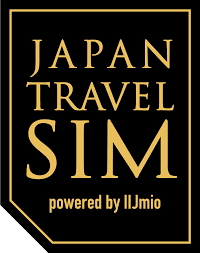
All Japanese SIM cards I used using IIJmio were mostly/always throttled @ 2 Mbps, 10 Mbps, or would start off normally for the first (few) day(s) before being slowed as well.
I go more in-depth about that in my individual Japanese SIM card reviews, but all the travel eSIMs I used, including Airalo's Asialink eSIM, were not affected by this nonsense… so that was amazing 🤣.
So while I usually compare my eSIM results with the local mobile operator, it is not something I can do in Japan consistently because all the SIM cards I tried were MVNOs 🥲.
But worry not – I will do my best, mostly because I tried nine travel eSIMs using the networks of the Big Three (NTT Docomo, Softbank & AU by KDDI) with varying results.
When looking at 4G/LTE availability in Japan, the three mobile operators cover practically all of the country, with an availability of at least 99.4%.
Rakuten Mobile exists in Japan too, but tourists cannot get its prepaid SIM cards. Moreover, none of the SIM cards or eSIMs I used were using its network, so I will ignore its results in this analysis.
Japan's 4G/LTE reception is so good that you will unlikely be stuck on 3G at any time.
Unless you did not turn off airplane mode while taking off to send a quick message… I know who you are 😏.
In terms of 5G NR, the Airalo Asialink eSIM did not support it when I was in Japan, so I will not go over that for now (but I will go back when it does support 5G NR, like the Ubigi eSIM on the NTT Docomo).
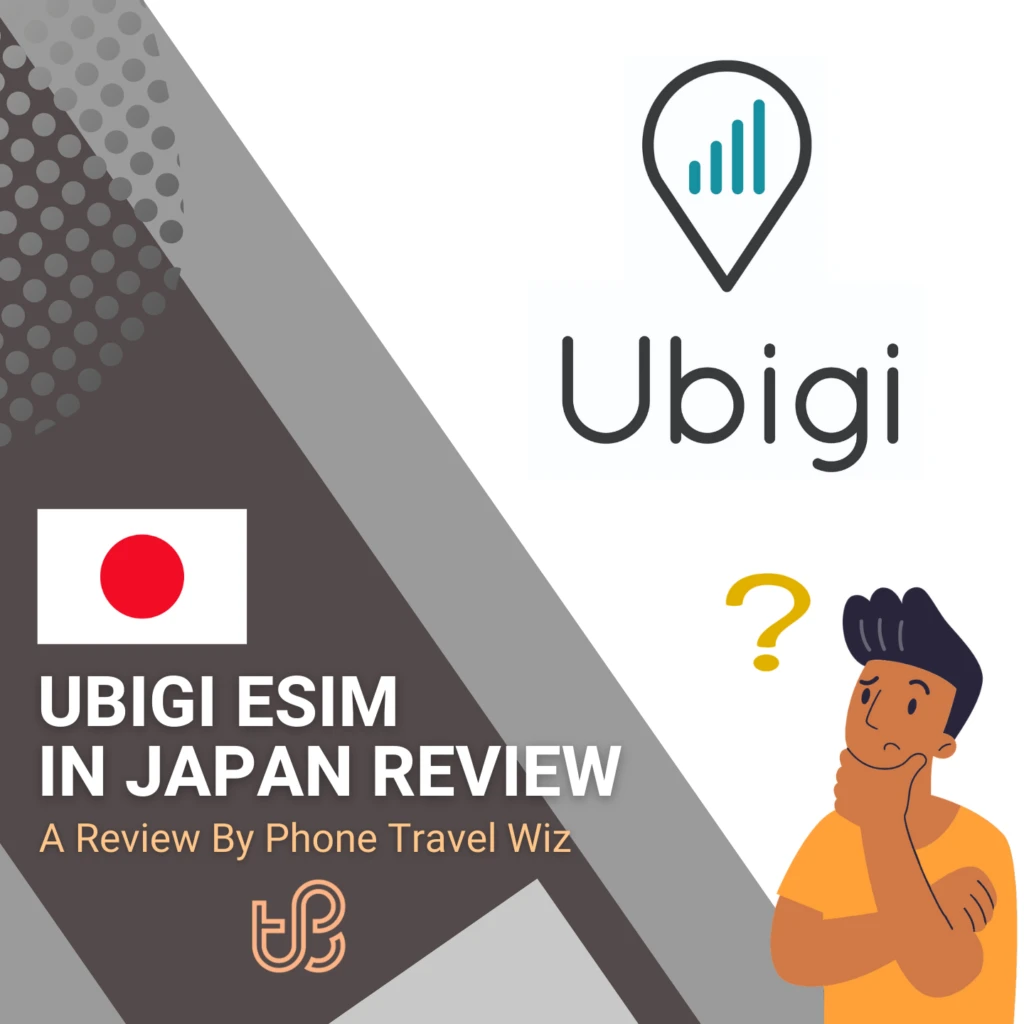
In terms of speed, NTT Docomo has the fastest download speed, with a median download speed of 48.86 Mbps, ahead of SoftBank (44.77 Mbps) and AU by KDDI (41.60 Mbps).
But these results are somewhat similar, so you can say they have roughly the same speed.
The same can be said about upload speeds, where SoftBank is leading the pack (9.24 Mbps), followed by NTT Docomo (6.97 Mbps) and AU by KDDI (6.40 Mbps).
I did speed tests with the Speedtest app in three regions throughout Japan.
For reference, I consider an average download speed of 25 Mbps and an average of 10 Mbps upload speed fast enough.
Preferably, download speeds should be 100 Mbps+ on 4G/LTE… but we are not there yet 🗿.
But why these averages?
A download speed of more than 25 Mbps is enough to video stream content @ 4k resolution.
Social media sites that allow for live streaming, like Facebook Live, recommend an upload speed of at least 10 Mbps.
So, that is why – but that does not mean that a download speed of less than 100 Mbps excited me 😏.
But Australia spoiled… everything slower than 300 Mbps is slow now 🤣.
Anyway, you will also see that some of the results are in two shades of red, green, underlined, or in italics.
Underlined results are on 5G NR, while results in italics are on 3G.
The green shows that the result was the fastest on the network at said location.
For example, the Airalo Asialink was the fastest travel eSIM on the SoftBank network in a mall.
While red shows that the result was the slowest on the network among its peers at the location.
Okay, that is enough background information – let's compare the Airalo Asialink eSIM to other travel eSIMs primarily using the SoftBank network in Hiroshima, the Kansai region & Tokyo Metropolis.
Airalo Asialink eSIM Speed Test Results in Hiroshima
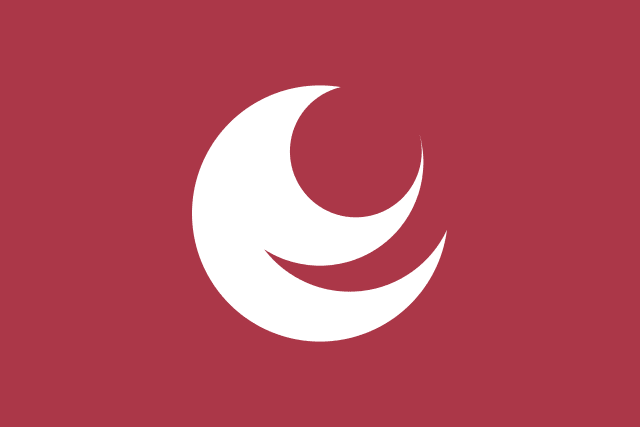
Hiroshima is mainly known for an incident that happened in 1945.
However, the radiation levels are so low nowadays that they are comparable to other Japanese cities – or most other cites worldwide.
Besides its history, it has much to offer, such as the Hiroshima Castle.
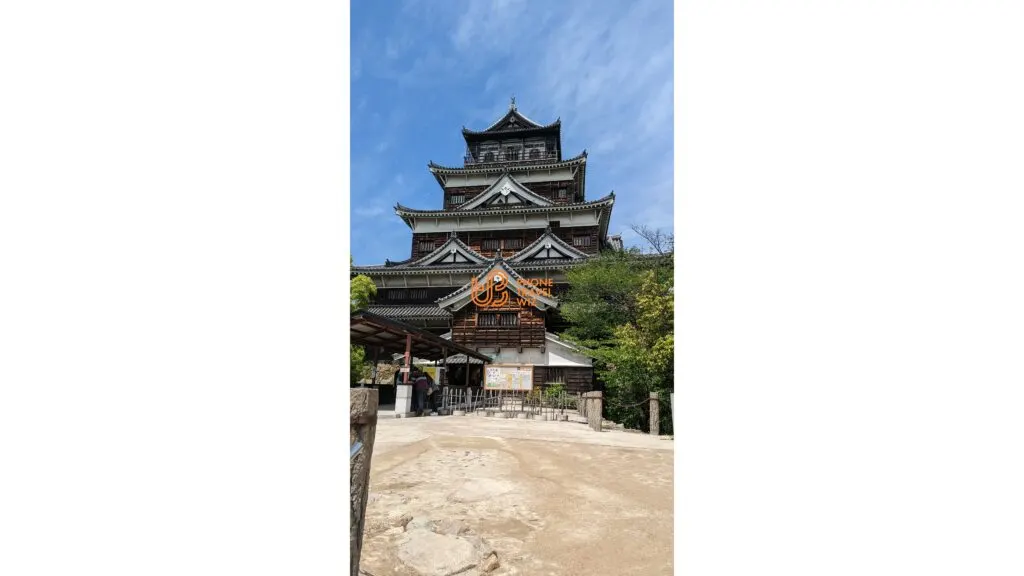
Including this cute variation of the castle.
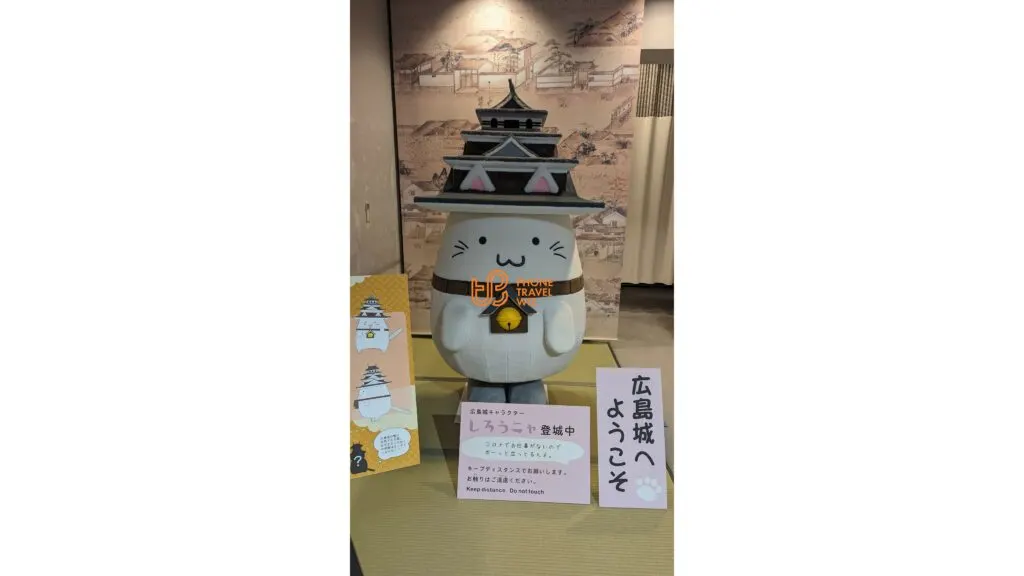
Hiroshima on its own is worth visiting, although it can be a nice day trip or weekend getaway if you are in the Kansai region (Osaka) already.
While Hiroshima may or may not be among the ten largest cities in Japan (it used to be until the 2010 census – that is when it fell out of it), 5G NR was somehow not available in the city.
COMST Japan, an NTT Docomo Mobile Virtual Network Operator (MVNO), and Ubigi Japan, using the NTT Docomo network, both have 5G NR access.
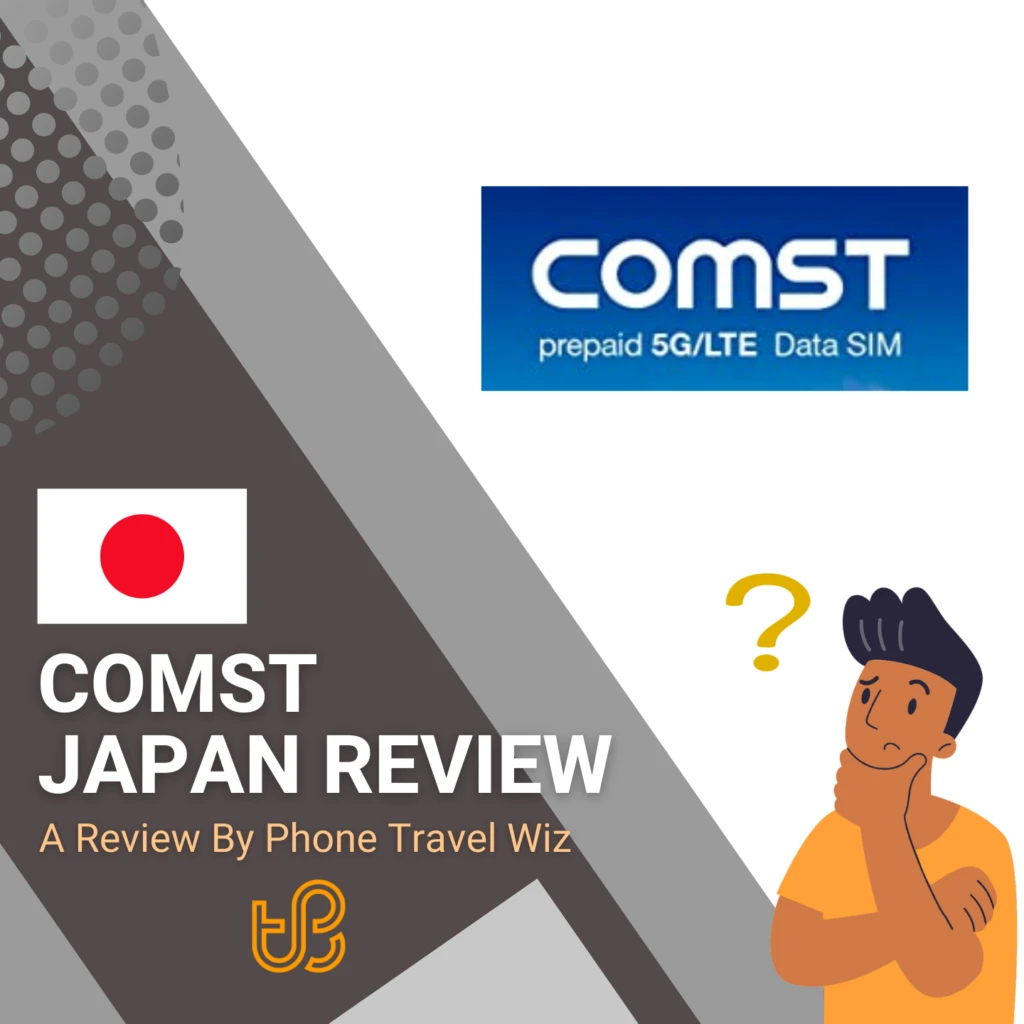

However, that technology was nowhere to be found throughout Hiroshima.
As a result, it was a leveling playing field to compare all the Japanese SIM cards and travel eSIMs I used because they all were on 4G/LTE.
For now, let's see how the Airalo Asialink eSIM performed in Hiroshima:
>>> Get your Airalo Asialink eSIM now! <<<
Airalo Asialink eSIM Speed Test Results in the Kansai region (Kobe, Kyoto, Nara & Osaka)
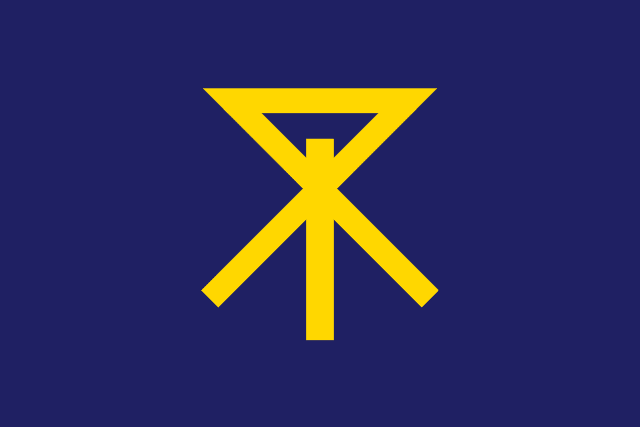
While the term Kansai region may not ring a bell for some readers, it is the second-largest region in Japan (behind the Kanto region, which includes Tokyo Metropolis).
The Kansai region is home to the famous Osaka but also Japan's former capital Kyoto.

And a few others like Kobe (yes – the one from Kobe Beef) and Nara (with the large deer park).
Most tend to stay in Osaka when they are in the Kansai region.
But I would highly recommend visiting one of the cities I mentioned earlier because (1) you are nearby and (2) they are worth the visit!
Osaka and the Kansai region was my first destination during this Japan trip.
Here, I learned that most Japanese SIM cards are slow.
And I could not contribute that to me being in some remote town… because Osaka is Japan's third-largest municipality (behind Tokyo and Yokohama (south of Tokyo)) and it has 5G NR (which I used with COMST Japan and Ubigi Japan).


As the Airalo Asialink eSIM is not powered by a Japanese mobile operator, I had a pleasant performance with it in the Kansai region.
So, let's see how the Airalo Asialink eSIM performed in the Kansai region:
>>> Get your Airalo Asialink eSIM now! <<<
Airalo Asialink eSIM Speed Test Results in Tokyo Metropolis (Chiyoba, Shinjuku, Taito & Tokohama)

Tokyo, or the Tokyo Metropolis, probably does not need an introduction.
As you probably already imagining a bustling city with bright lights.
Which… it certainly is!

But do know that Tokyo consists of 26 cities (+a few towns and villages).
In fact, Tokyo Metropolis has 39 municipalities under its name.
This is why the heading for this section had Chiyoba, Shinjuku, Taito & Tokohama in parentheses because those are the cities I visited on this trip.
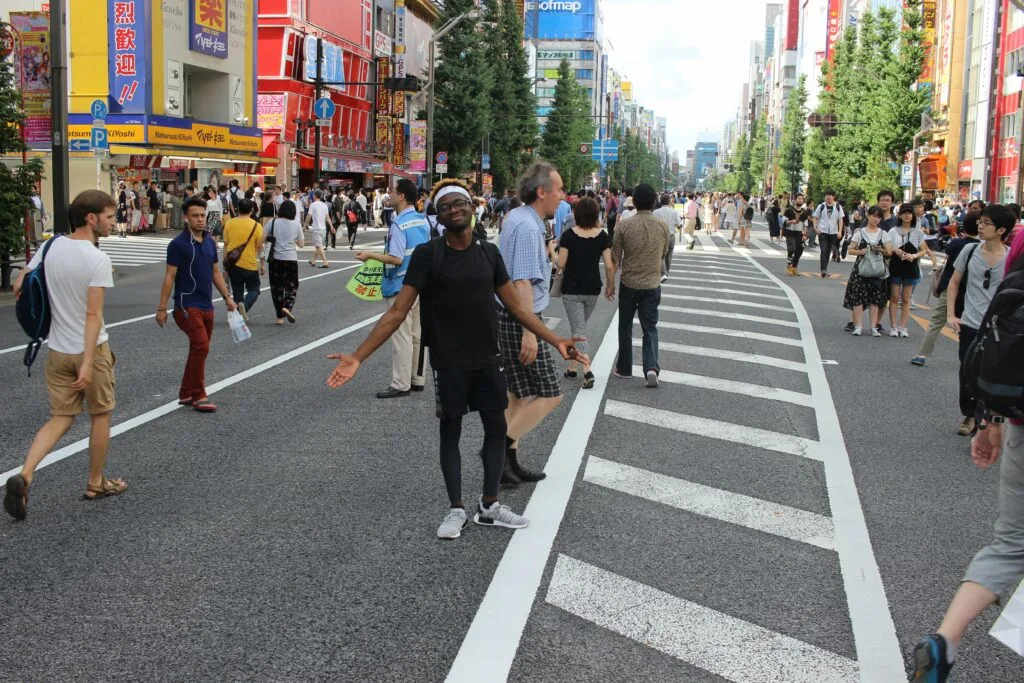
But wherever you go in Tokyo, you will have guaranteed fun 😄.

Let's see how the Airalo Asialink eSIM performed in Tokyo Metropolis:
>>> Get your Airalo Asialink eSIM now! <<<
My Overall Experience with the Airalo Asialink eSIM in Japan – Is It Any Good?
I would recommend the Airalo Asialink eSIM for Japan, and it would be one of my top recommendations for anyone wanting to buy an Asia travel eSIM (but not if you only visit Japan).
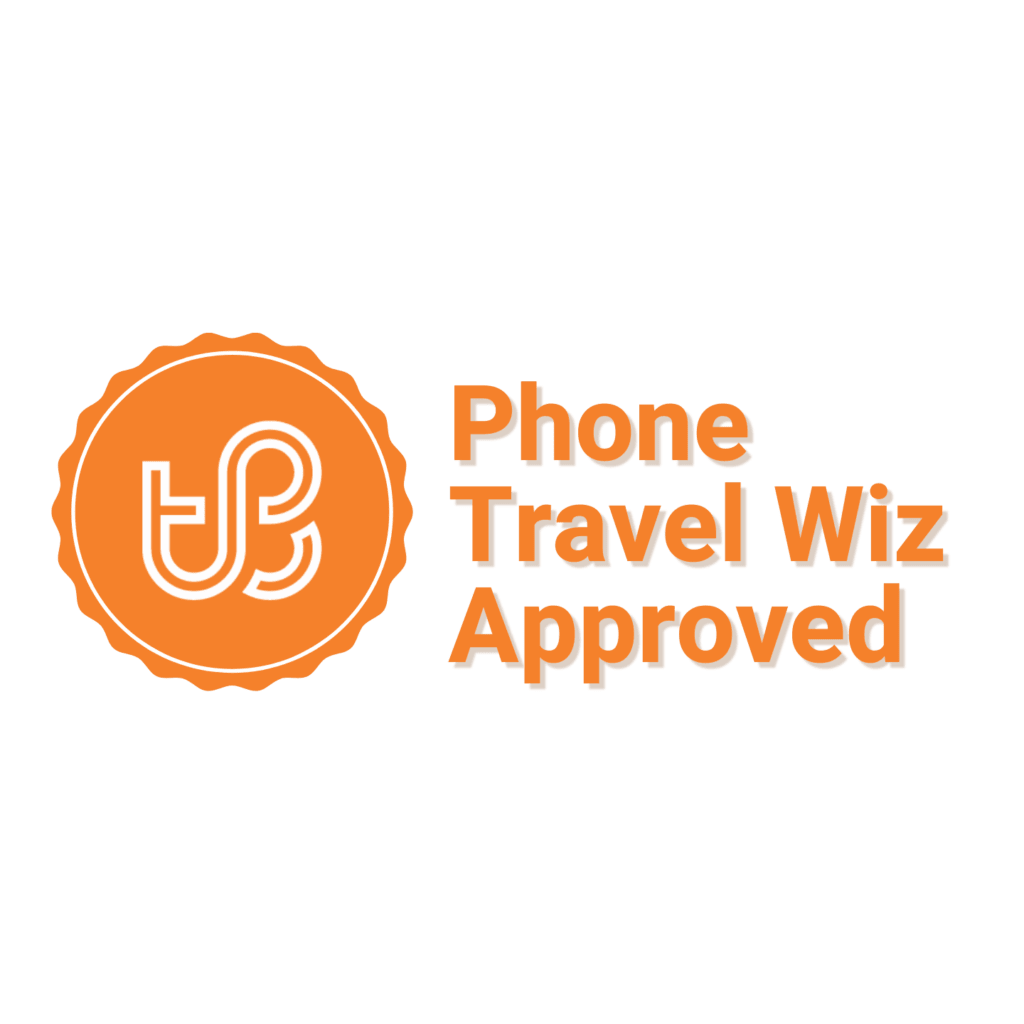
>>> Get your Airalo Asialink eSIM now! <<<
While I had a good experience with the Airalo Asialink eSIM, you are better off getting the Airalo Moshi Moshi eSIM if you only visit Japan.
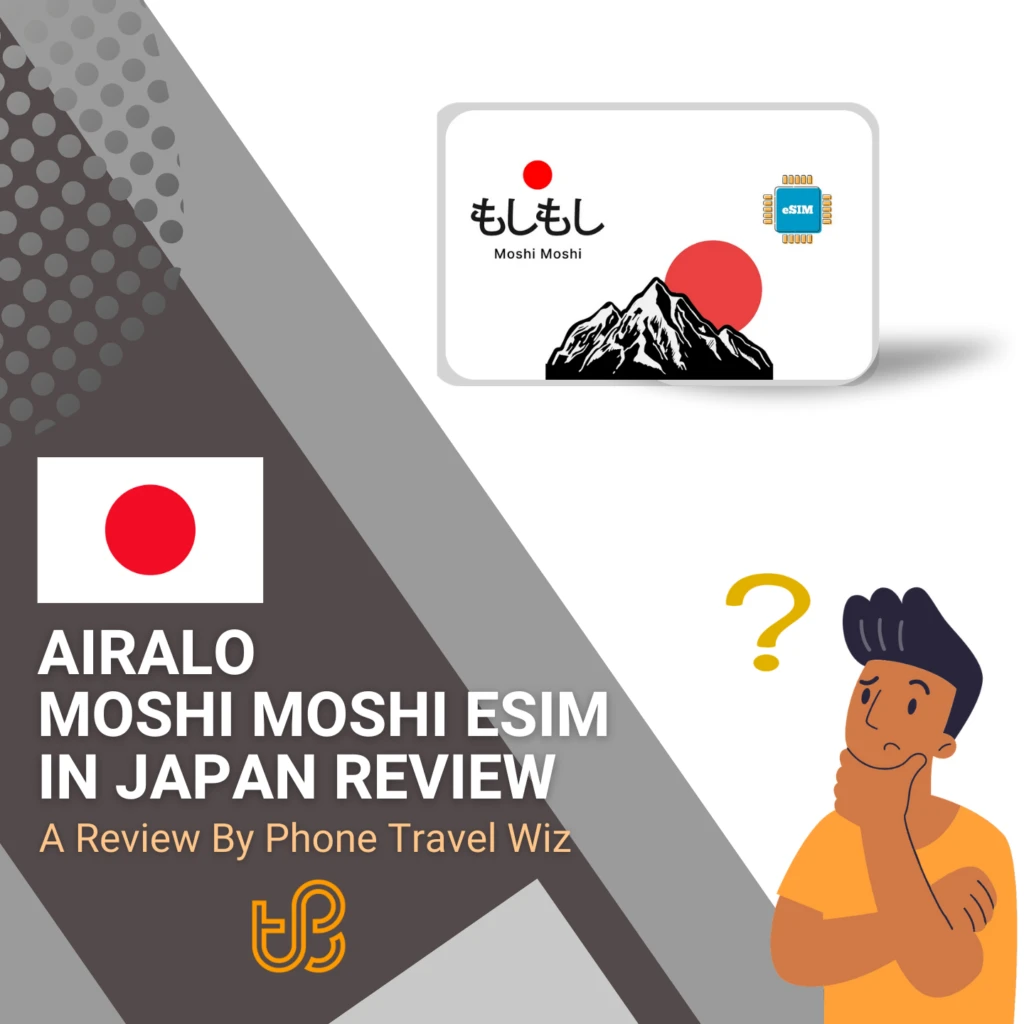
That is because you pay a premium to be able to use one eSIM in more than ten East- and Southeast Asian countries.
So if you are visiting multiple East- and Southeast Asian countries, you better go with the Airalo Asialink eSIM because you will be saving quite some money when you do so.
Especially when some country-specific East- and Southeast Asian countries have only one eSIM variant (1 GB/7 days for Laos).
Yes, top-ups are available, but you will end up spending way more for 10 GB of data with nine top-ups: 10 * 9.50 USD = 95 USD for Laos (only 37 USD with the Asialink eSIM).
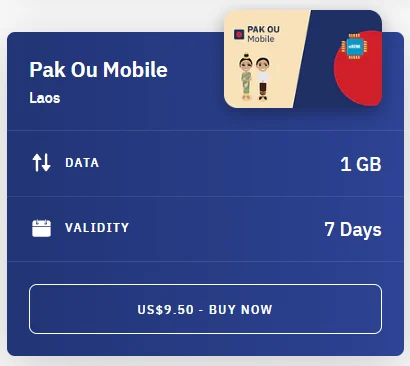
Okay, back to Japan specifically, getting the Airalo Asialink eSIM, and any other Airalo eSIM for that matter, is easy and straightforward (even though I did not spend any time on how to install Airalo eSIMs – you will manage… promise!).
Airalo's Asialink eSIM has the most generous data allowance of any Asia eSIM I know of (1 GB, 3 GB, 5 GB, 10 GB, 50 GB & 100 GB).
In Japan, it uses the SoftBank and AU by KDDI networks, which have practically excellent 4G/LTE availability (just like NTT Docomo – the other mobile operator part of the Big Three).
But, I was primarily on the SoftBank network with the Airalo Asialink eSIM.

However, you can manually select the AU by KDDI network if you want to (which would be unnecessary… but you have the choice!).

The other two Airalo eSIMs that cover Japan (Moshi Moshi for Japan and 13 other Asian East- and Southeast countries and Discover Global for Japan and 84+ other countries globally) also use the SoftBank network.

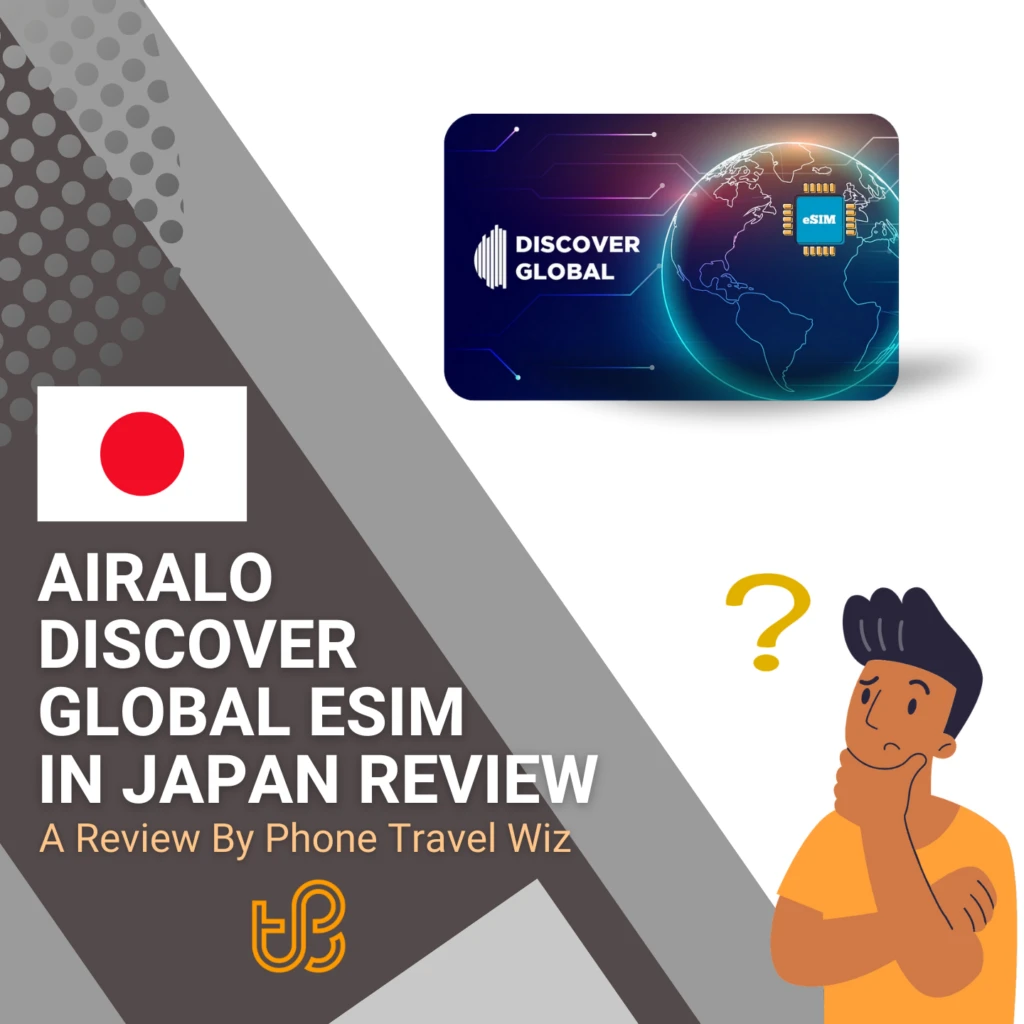
You will have one of the fastest network experiences with the Airalo Asialink eSIM (compared to other travel eSIMs I have used in Japan).
There was only one Japanese SIM card, COMST Japan, that was (significantly) faster (because it had 5G NR access in the Kansai Region and Tokyo Metropolis).

So… the eSIM is an excellent choice 😳.
Taking all 91 speed tests into account, I had an average overall download speed of 44.02 Mbps and a median download speed of 40.91 Mbps with the Airalo Asialink eSIM in Japan.
When looking at upload speeds, I had an average upload speed of 11.28 Mbps and a median upload speed of 9.89 Mbps with the Airalo Asialink eSIM in Japan.

The upload speeds are not impressive because the Japanese mobile operators already have slow speeds.
So the Airalo Asialink eSIM could not do better in that regard.
Normally, I would tell you how much faster or slower the Airalo eSIM would be compared to the network it uses (SoftBank, in this case).
But because Japanese mobile operators do not care about travelers who want prepaid SIM cards, I could not get a SoftBank SIM card.
Instead, only Mobile Virtual Network Operators (MVNOs) sell prepaid SIM cards, and they go through another MVNO, which aggressively throttles speeds.
So… no Airalo Asialink vs. SoftBank comparison 😔.
But as I said, only one Japanese SIM card was faster (COMST Japan).
The Japan Wireless eSIM, using the AU by KDDI network through China Mobile Hong Kong, came close with an average download speed of 47.35 Mbps.
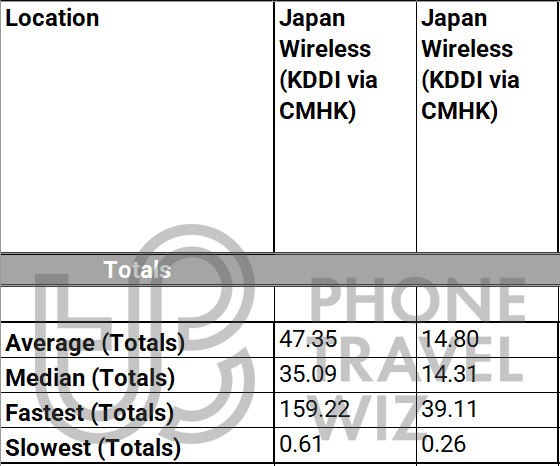
But unlike the Airalo Asialink eSIM, I used it in Tokyo Metropolis only (whereas I used the former in Hiroshima and the Kansai region too).
So I suspect its average would be dragged down a bit if I used it outside the capital area too.
Airalo's Moshi Moshi eSIM, which I recommend if you only visit Japan, did well too.
The Airalo Discover Global eSIM, however, was almost always the slowest travel eSIM I tested 😒.
With an average download speed of 10.05 Mbps in the Kansai region, it was no match for its “competitors”.
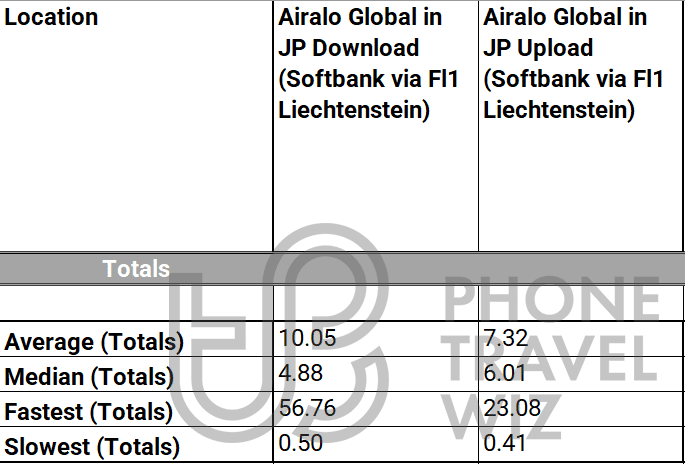
So I did not bother using and testing it in Hiroshima and Tokyo Metropolis because… I knew enough 🤣.
While I do not recommend the Airalo Discover Global eSIM when you visit one country only, like Japan, it is a useful eSIM for those traveling multiple continents or countries not supported by regional Airalo eSIMs (like its Asialink eSIM – select East- and Southeast Asian countries only).
By using a near-perfect 4G/LTE network, offering affordable data plans (cheaper than Japanese SIM cards) & offering super-fast download speeds, you should have a smooth browsing experience with the Airalo Asialink eSIM.
>>> Get your Airalo Asialink eSIM now! <<<
Interested in using the Airalo Asialink eSIM in another country or countries? Read my Airalo Asialink eSIM review (tested in numerous countries and counting).

Other Japanese eSIM Reviews (Airalo, Holafly, Japan Wireless, Nomad, SimCorner & Ubigi)
As mentioned earlier, I also tried out (other) eSIMs from Airalo (Moshi Moshi and Discover Global), Holafly, Japan Wireless, Nomad (Japan and APAC), SimCorner & Ubigi.
You should read those reviews too.
>>> Airalo Moshi Moshi eSIM in Japan Review | Airalo Discover Global eSIM in Japan Review | Holafly eSIM in Japan eSIM Review | Japan Wireless eSIM Review | Nomad eSIM in Japan eSIM Review | Nomad APAC eSIM in Japan Review | SimCorner Japan eSIM Review | Ubigi eSIM in Japan <<<
- Check out my eSIM reviews page if you want to read all the other eSIM reviews I have written, including other eSIM providers in Asia.
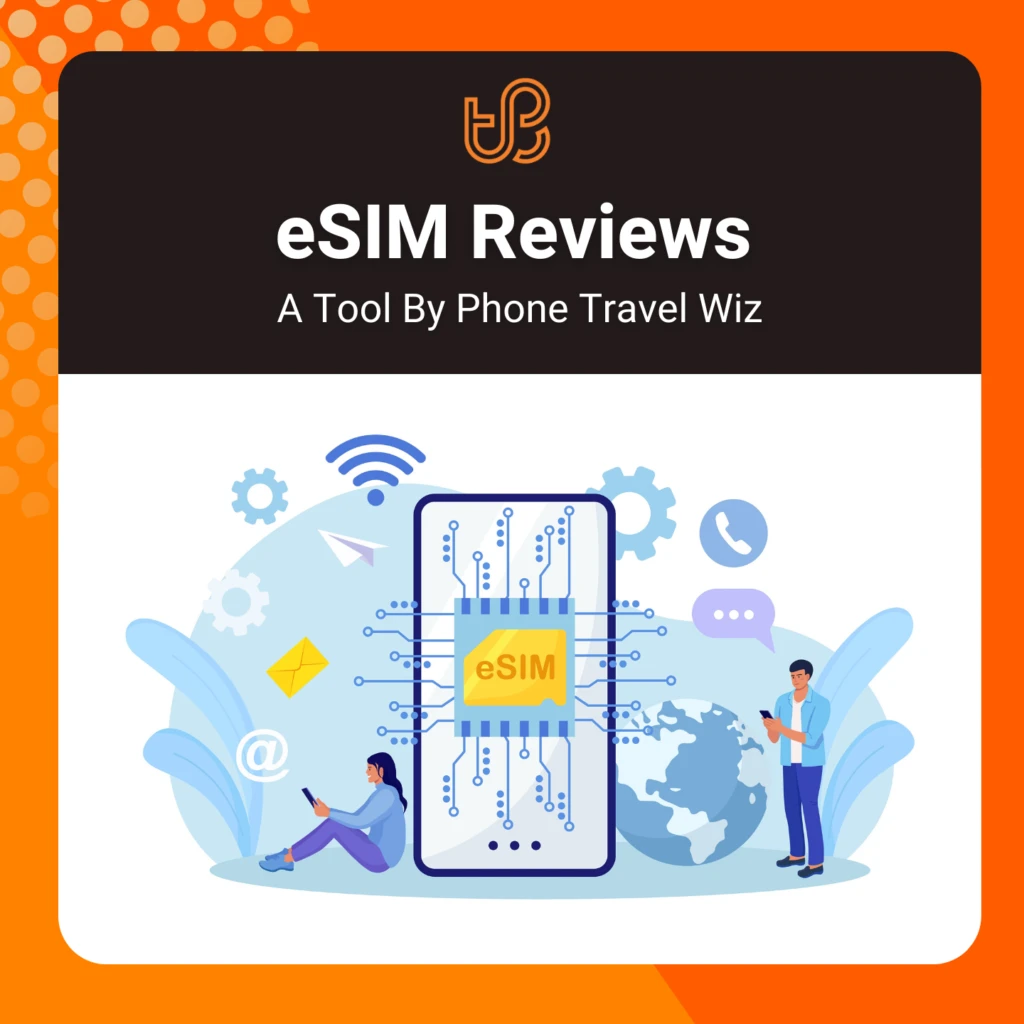
I also tried out various local Japanese cards: AnyFone Japan, COMST Japan, Mobal, Nippon SIM, Sakura Mobile, Tourist SIM for Japan, Wireless Gate Japan + TrueMove H Asia Travel SIM Card (from Thailand).
If your phone does not support eSIM (but felt like reading this Airalo review in full anyway – awesome) or want to have the best network experience possible, you want to go directly with the local mobile operators instead of roaming on their networks (as you do with travel eSIMs).
So I encourage you to read the Japanese SIM card reviews too.
>>> AnyFone Japan Review | COMST Japan Review | Mobal Review | Nippon SIM Review | Sakura Mobile Review | Tourist SIM for Japan Review | Wireless Gate Japan Review | TrueMove H Asia Travel SIM Card Review <<<
Check out my reviews page if you want to read all the other reviews I have written, including other Asian SIM cards.




